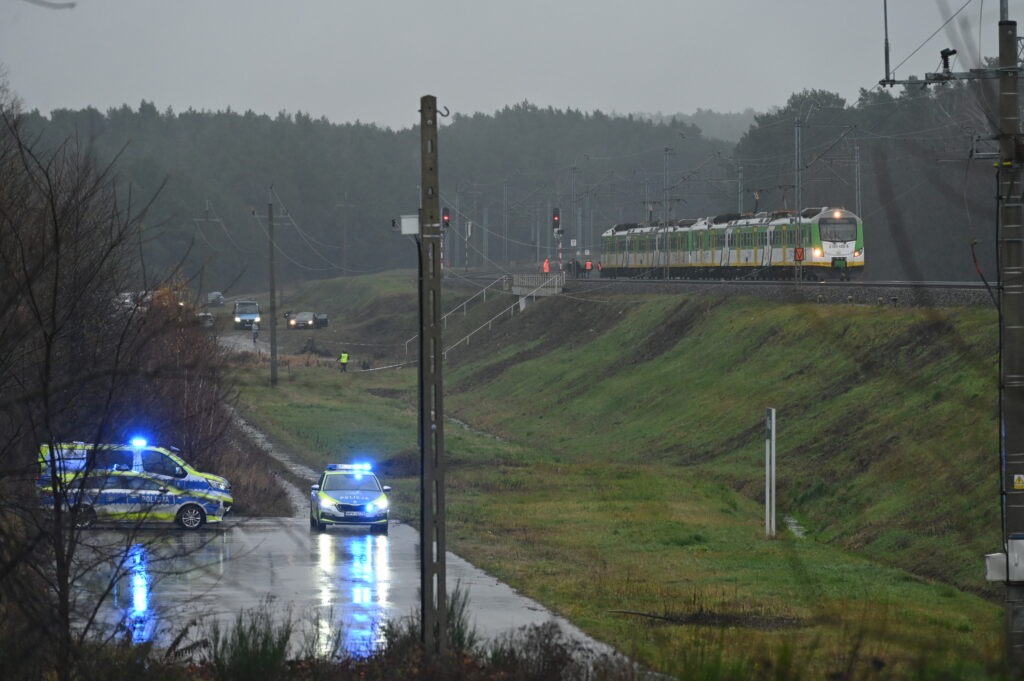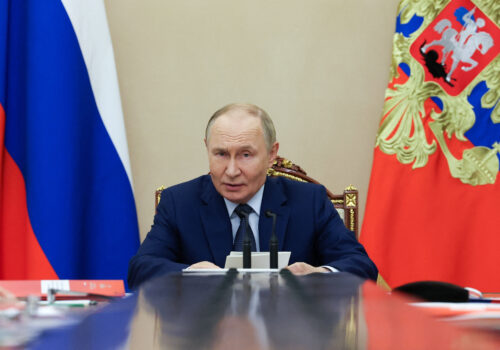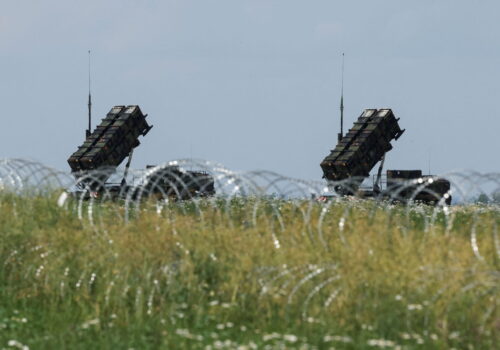WARSAW—Unable to defeat Ukraine quickly or force political capitulation in Kyiv, Russia has expanded the battlefield into the daily life of European societies. Moscow’s objective is clear: weaken Western unity by creating a constant sense of vulnerability, without crossing the threshold that would trigger a formal NATO response. This pressure is increasingly visible in Poland and elsewhere in Central and Eastern Europe.
This month, a deliberate act of sabotage occurred on the Polish-Ukrainian railway corridor, where an explosion destroyed a section of track used to transport goods to Ukraine. The suspects reportedly escaped across the border into Belarus. A year earlier, Warsaw faced a high-profile arson attack that nearly destroyed a large shopping warehouse on the city’s outskirts; the Polish government attributed the incident to Russian involvement.
Throughout this year, drone sightings have forced temporary closures and flight cancellations at major airports in Copenhagen, Berlin, Munich, Frankfurt, Brussels, Liège, Oslo, Riga, and Gothenburg. These disruptions remain under investigation, but authorities across the continent increasingly view them as part of a broader pattern of hostile activity.
In response to the recent railway sabotage—and amid mounting evidence of Russian responsibility—Poland has launched Operation Horizon. The operation is a nationwide security initiative designed to prevent further attacks on rail corridors, logistics hubs, and other critical sites that could be targets of arson, disruption, or coordinated cyber operations. Up to ten thousand military personnel will be deployed, with the Territorial Defense Forces and Poland’s rapidly expanding cyber units playing a central role.
The scale and visibility of this effort recall the internal security measures introduced in several Western European countries after terrorist attacks in the early 2000s, including in Spain, France, the United Kingdom, and Belgium. But the situation in Poland today is different. Here, the threat comes not from a dispersed extremist network but from a nuclear-armed state deliberately probing the defenses of a NATO ally.
Russia’s “platformization” of sabotage
Before 2022, Russian-linked acts of sabotage appeared only sporadically and were usually directed at military targets. They also tended to occur at times of political significance. Over the past two years, however, such incidents have multiplied across NATO states and begun to form a recognizable pattern.
The incidents tend to share several traits: They are cheap to execute, hard to attribute quickly, and carry psychological weight. They create the impression that Europe’s security architecture is penetrable even inside NATO and the European Union (EU). That atmosphere of uncertainty is the intent.
A major driver behind the rising tempo of these operations is Moscow’s shift away from its traditional intelligence networks. After the expulsion of hundreds of Russian diplomats across Europe, many of whom served as intelligence officers, the Kremlin adapted. What has emerged is a fragmented, semi-outsourced approach that resembles a gig-economy model. Individuals recruited through Telegram or other online platforms, often with little understanding of who they are working for, carry out disruptive tasks for modest payments. Cryptocurrency transfers replace diplomatic pouches, and encrypted messages substitute for direct handling.
This approach gives Moscow several advantages:
- It reduces exposure: When someone is caught, tracing responsibility becomes difficult.
- It lowers operational costs: Sabotage turns into a low-budget tool of statecraft.
- It exploits existing local tensions, especially when the perpetrators appear to be migrants, fringe activists, or opportunistic locals.
The goal is not just to damage infrastructure but also to sow distrust inside Western societies. Involving Ukrainians, EU citizens, or individuals with no political motivation helps Moscow feed narratives that allied states are infiltrated or internally divided.
Why the Kremlin feels free to escalate
Three strategic calculations underpin Russia’s willingness to intensify such operations.
First, Western responses so far have not created meaningful deterrence. Diplomatic notes, investigations, and targeted sanctions signal concern but do not carry meaningful consequences for Russia. For a regime that habitually probes boundaries, this looks less like a warning and more like permission to continue.
Second, even disruptions that serve no military value can have a profound psychological effect. A fire in a warehouse or a derailed train can dominate headlines and fuel anxiety at minimal cost.
Third, Russia wants to wear down long-term support for Kyiv. If Western publics begin to link aid to Ukraine with rising domestic insecurity, pressure on governments to rethink their commitments might increase. In Poland, this dynamic also feeds anti-migrant and anti-Ukrainian narratives, amplified by the fact that a pro-Russian presidential candidate attracted 1.2 million votes in the 2025 presidential election.
From Moscow’s perspective, this approach is producing results. Western (and more specifically Polish) unity holds, but its endurance is being tested more often, and the political price is rising.
A missing counterstrategy
Europe has improved infrastructure protection and intelligence cooperation, but the overall approach remains mostly defensive. If sabotage is now a permanent element of Russia’s confrontation with the West, then the response needs to match that reality.
This means agreeing on a common framework for hybrid deterrence, speeding up joint investigations to establish attribution quickly, and strengthening societal resilience against disinformation and panic. In practice, this would mean shared alerting procedures, joint threat-analysis cells, and faster intelligence exchange to trigger automatic, coordinated responses of all EU member states. Poland here has a bigger role to play as it has more skin in the game (it borders Russia from the north and Belarus from the east). And also it has the growing military and intelligence capacity other EU member states lack.
Russia is waging a long, low-cost pressure campaign that targets not only the battlefield but everyday life across EU countries. The Kremlin wants Europeans to feel that they are at war, or close to it, and therefore that supporting Ukraine is no longer worth the risk. Now is the time for Europe to develop and use countermeasures to deter Russia’s hybrid threats and bolster societal resilience in the face of Moscow’s sabotage campaign. Because tomorrow, a successful attack could mean hundreds or even thousands of lives lost.
Piotr Arak is a nonresident senior fellow at the Atlantic Council’s Europe Center.
Further reading
Wed, Nov 19, 2025
Dispatch from Warsaw: How to respond as Putin ratchets up the pressure
New Atlanticist By Daniel Fried
A suspected act of sabotage on a Polish railway line has highlighted the need for NATO countries to respond to Russian aggression.
Tue, Sep 23, 2025
Putin is escalating Russia’s hybrid war against Europe. Is Europe ready?
UkraineAlert By
Putin has clearly been encouraged by Trump’s efforts to downgrade America’s involvement in transatlantic security and feels emboldened to escalate his own hybrid war against Europe, writes Maksym Beznosiuk.
Tue, Sep 16, 2025
Ukraine’s skies are Europe’s first line of defense against Russian drones
UkraineAlert By
As NATO leaders respond to Russia's recent drone incursion into Poland, they should recognize that Ukraine's skies are now European first line of defense against Putin's growing drone fleet, writes Alina Zubkovych.
Image: Police investigate at the scene of a damaged section of railway tracks on the Deblin-Warsaw route near the Mika railway station, next to the town of Zyczyn, central Poland, on November 17, 2025. Polish Prime Minister Donald Tusk says that an act of sabotage takes place, resulting in the destruction of the railway tracks by an explosive device. The damaged route is also crucial for delivering aid to Ukraine. (Photo by Aleksander Kalka/NurPhoto)NO USE FRANCE




